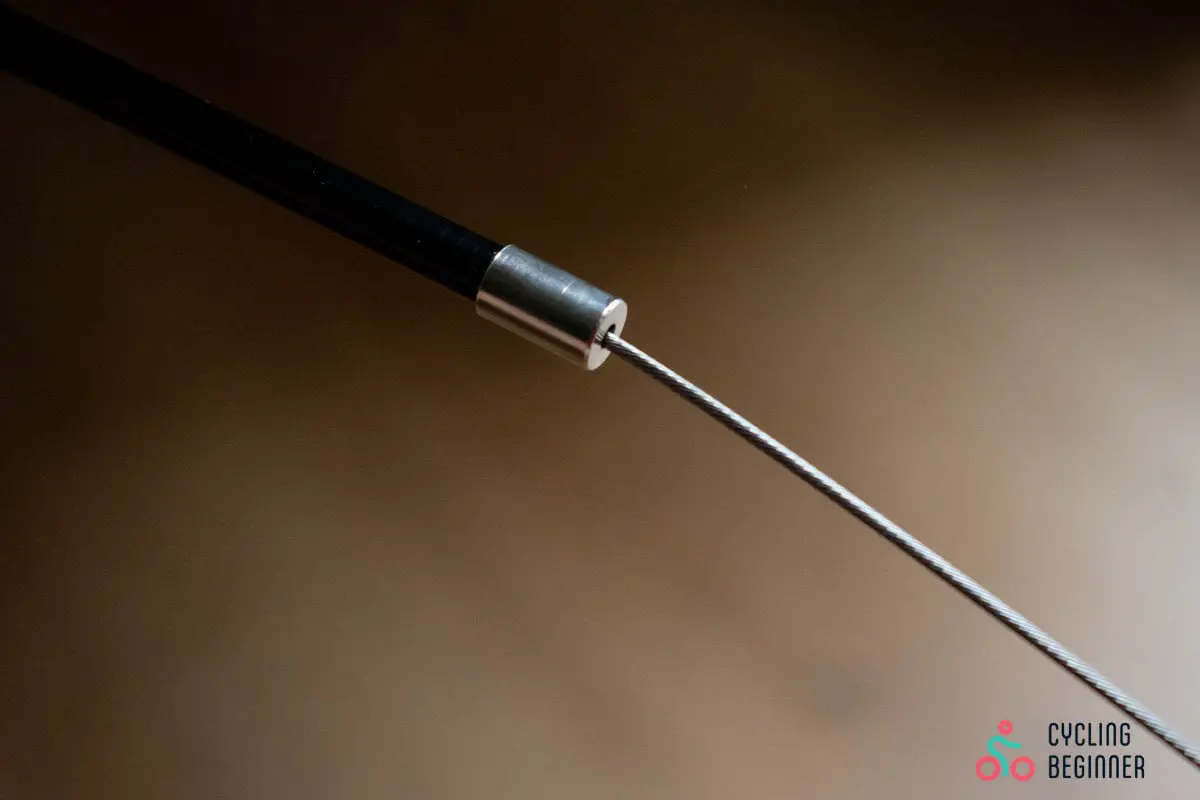Have you ever been replacing a cable housing and at the last moment realized you don’t have housing end caps? You are not alone! Nor are you the only one who has wondered how important they are and if you can ride a bike without them.
Housing end caps are important because they maintain the central alignment of the cable and thus prevent the housing from being torn by the cable. They also prevent the housing from fraying and protect it from dirt that would otherwise enter the housing and prevent the cable from running normally.
Housing end caps may seem unimportant at first glance, just like cable end caps or valve caps. But unlike them, a missing housing end cap can cause serious problems.
Why should you use a housing end cap?
A small plastic or metal cap can’t be that important, right?
Yeah, I thought so too, but I have experienced first-hand that the devil is in the detail.
The housing end cap is indeed small, but it plays a huge role in protecting the housing and cable, thus extending their lifespan.
The cable’s lifespan is also extended by the cable end cap, about which you can read more in one of the other blog posts.
The housing end cap protects the housing from damage. This can happen in several ways:
- Cutting by the cable. The housing end cap has a hole in the middle through which the cable is routed. This is important as it directs the cable into the center and prevents the cable from cutting the housing and thus slowly tearing it apart.
- Fraying. Without the use of the housing end cap, the housing will quickly start to fray, especially if it has not been cut with sharp cutters. This slowly makes the housing shorter and shorter, reducing the cable tension, and over time the cable needs to be re-tensioned and the housing needs to be replaced.
- Dirt. The housing end cap protects the housing interior from dirt that would otherwise accumulate during the ride. Over time, this can form a dirt layer against which the cable rubs. This destroys both the cable and the housing and sooner or later both need to be replaced.
You can prevent all three ways of damage with a small piece of plastic, which you can get for a few cents.
It is not worth saving money on end caps, as the cost of replacing the housing and cable is much higher than the price of the end cap. Especially the housing can be quite expensive.
In the long run, you will save money by using a housing end cap, as it will extend the lifespan of both the housing and the cable. Their use is therefore not only advisable but also makes financial sense.
Can you ride a bike without housing end caps?
From time to time it happens that you’re not able to get the housing end cap when you need it. You won’t cancel the ride because of this, so you’ll go on it without a housing cap.
If the cable has been properly routed and tensioned, you shouldn’t have major problems while riding. The cable will rub against the edge of the housing, but it will still do its job properly.
However, I advise you to buy housing end caps as soon as you get home and fit them on the housing as soon as possible.

After one ride the housing won’t be damaged yet and it won’t require replacement. But the more you ride without a housing end cap, the more you will destroy it.
The downside of riding without a housing end cap is that you will have to remove the cable again, reroute it and then tension it again when you install the new housing end cap. Now you see why it makes sense to install it right away.
Do you need a housing end cap on all housings?
If you are lucky enough to own a bike with internal cable routing, then you can skip the next few paragraphs.
But if you are in the same situation as me and the cables of your bike are visible to everyone, then read the next few paragraphs carefully.
The short answer is YES. You need housing end caps on all housings.
Now, if you want to know why you need them, read the remainder of this chapter.
Every road bike has two derailleurs (front and rear) and two brakes (front and rear). Shift and brake levers are connected to the derailleur and brake caliper with a cable, which means that you have four cables on the bike.

Each cable runs through the housing in certain sections. The front brake cable is almost completely covered by the housing, while the other three are usually covered in three separate sections.
It is recommended that the housing is protected with a housing end cap at both ends. This protects not only the cable and housing but also the frame, which is designed to fit the housing cap and not the housing itself.
The frame is designed to fit the housing end cap and not the housing itself.
Housing end caps are also the contact point of the housing and shift and brake levers. Without them, shifting and braking may not work optimally, which can impair your cycling experience, and if the brakes are not working properly, can also jeopardize your safety.
How many housing end caps do you need on a road bike?
As we found out in the previous chapter, there are four cables on the bike. The shortest is the front brake cable, which is also the only one that has only one section of housing.
The other three cables are ‘bare’ in some sections and ‘dressed’ in others. The housing can be found in areas where the cable needs to be twisted, as the housing is there to maintain the cable tension.

In practice, this means that the rear brake cable and front derailleur cable run through the housing in two sections, and the rear derailleur cable in three.
In total, there are eight sections of housing on the bike, each of which requires two housing end caps. Therefore, you need 16 housing end caps for proper cable and housing routing.
How do you install the end cap correctly?
Installing the housing end cap is the easiest job on the bike.
You take the housing end cap, thread a cable through it, and slide it along the cable to the housing. You fit it on the housing and the job is done.
Unlike cable end caps, housing end caps do not need to be squeezed with cutters to stay in place.
But beware!
Nothing in the world is as simple as it seems.
Occasionally when installing the housing end cap, it does not fit the housing. This is because you chose the wrong size cap.
The housing for the brake cable and the shift cable can be of different diameters.
The brake cable housing is usually 5 millimeters wide, while the shift cable housing can be 4 or 5 millimeters wide. The size of the housing end cap depends on this.
Before buying a housing end cap, make sure you know the diameter of the housing!
What type of housing end cap should you choose?
There are several different types of housing end caps on the market, differing in length and cable sealing method.
My recommendation is not to complicate the choice.
Different types of housing end caps do not make a difference you would notice. The only important factor when buying them is that the housing end cap is of good quality and will not crack at first use.
I recommend buying a complete set of housing and housing end caps from Jagwire. They are one of the most respected manufacturers of housing and housing end caps, so you know what you are getting.
Purchasing the package also guarantees that the housing end caps are compatible with the housing. Just make sure you buy a brake or shifter set, depending on what you need.
Conclusion
Housing end caps are a small but incredibly important part of a bike. They protect the housing from damage and ensure the smooth performance of the brakes and shifters.
If you don’t have housing end caps nearby when replacing the housing, you can go for a ride without them, but I advise you to buy and install them as soon as possible. Unfortunately, this means rerouting the cable, but by installing the housing end cap, you will extend the life of both the housing and the cable.
Replacing all the cable housings on your bike will require 16 housing end caps, which luckily will not be a huge financial burden.
When buying housing end caps, pay attention to their diameter, as the brake housing usually requires a 5-millimeter diameter, while the shifter housing requires a 4 or 5-millimeter diameter.
The easiest way is to buy housing and housing end caps in a pack, as this ensures they are the same size and therefore compatible. But be careful to buy the appropriate set, either a brake or shifter set.

